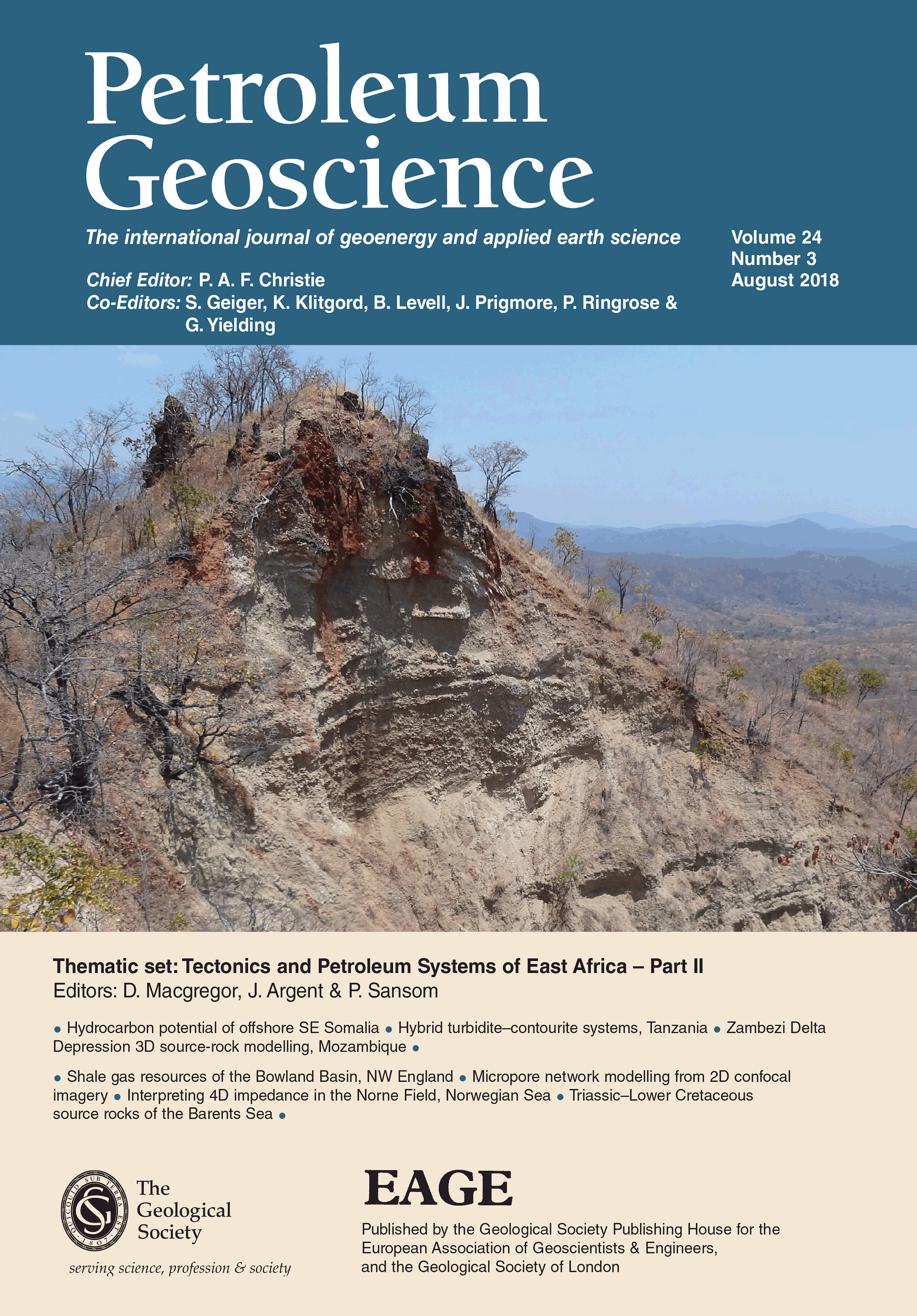
Full text loading...
Rock-Eval and total organic carbon (TOC) analyses of 144 samples representing Triassic–Lower Cretaceous intervals from the SW Barents Sea (the Svalis Dome, the Nordkapp and Hammerfest basins, and the Bjarmeland Platform) and Svalbard demonstrate lateral variations in source rock properties. Good to excellent source rocks are present in the Lower–Middle Triassic Botneheia and Steinkobbe, and Upper Jurassic Hekkingen formations, 1 – 7 wt% and 6 – 19 wt% TOC, respectively. Hydrogen indices of 298 – 609 mg HC/g TOC in the Botneheia Formation from Svalbard, and 197 – 540 mg HC/g TOC in the Steinkobbe Formation of Svalis Dome suggest Type II (oil-prone) and Type II/III (oil/gas-prone) kerogens, respectively. The Kobbe Formation (Botneheia/Steinkobbe-equivalent) is organic-lean and generally gas-prone (Type III kerogen) on the Bjarmeland Platform and in the Nordkapp Basin, and is a good source rock with Type III/II kerogen in the Hammerfest Basin. In the investigated wells, the Hekkingen Formation is more oil-prone on the Bjarmeland Platform than in the Nordkapp Basin, while Lower Cretaceous samples have poor potential for oil. Upper Triassic samples show potential mainly for gas; however, coal/coaly-shale samples in well 7430/07-U-01 (Bjarmeland Platform) are oil/gas-prone. Most samples analysed are immature to early mature; thus, the variation in petroleum potential and kerogen type is a function of organic facies rather than maturity levels.

Article metrics loading...

Full text loading...
References


Data & Media loading...

